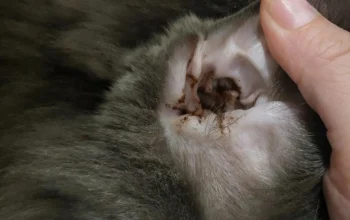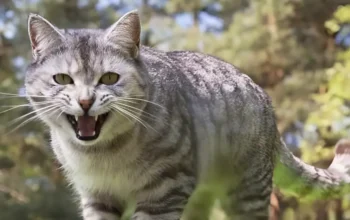Ever been tempted to color your pet’s fur just to make them look extra cute for Instagram? You’re definitely not alone. From pink poodles to neon cats, it seems like coloring pet fur is trending. But have you ever wondered if that bright blue tail is actually safe for your furry friend?
Here’s the thing—pet hair dye dangers are real. While it might seem like harmless fun, the chemicals inside those dyes might be putting your pet’s health at serious risk. Let’s break it down with help from veterinary experts, real studies, and tips to keep your pets safe.
Table of Contents:
The Truth About Pet Hair Dye According to Veterinarians
Veterinary toxicologist Dr. Justine A. Lee explains that many fur dye products contain harmful chemicals that pets can’t handle. Their livers work differently than ours, especially in cats, and aren’t always able to break down substances found in household or cosmetic products.
Dr. Lee says, “Even common household detergents can have corrosive and toxic effects on cats. So imagine the damage chemical dyes can do.”
Risks of Dyeing Pet Fur
1. Liver Metabolism Disruption
Pets, especially cats, have unique liver enzymes. When they’re exposed to certain chemicals, their bodies can’t break them down properly. That means toxins can build up fast and cause liver damage.
2. Skin Irritation and Allergic Reactions
According to WagWalking, fur dyes can lead to skin issues like itching, redness, or a burning sensation. If your pet is constantly scratching or avoiding touch after a dye job, it could be a sign of irritation or worse, an allergic reaction.
3. Toxic Reactions From “Natural” Products
Surprised? Even natural ingredients aren’t always safe. Essential oils, for instance, can cause breathing problems, chemical burns, or even liver failure in pets. One veterinary study found a dog died from anemia after ingesting henna-based dye.
What Symptoms Should You Watch For?
Not all reactions show up right away. Keep an eye on your pet if you’ve used any fur dye, even the so-called “pet-safe” ones. Here are warning signs that should never be ignored:
- Foaming at the mouth
- Excessive drooling
- Loss of appetite
- Lethargy
- Red or irritated skin
- Constant scratching or licking
- Vomiting
- Diarrhea
- Difficulty breathing
If any of these show up, rinse off the dye immediately and call your vet. Don’t wait, early action can save lives.
When It’s Still Done: Is There a Safe Way?
Some pet owners still want to dye their pet’s fur. If you’re one of them, Dr. Lee recommends using only dyes specifically made for animals, and even then, check that they’re free from dangerous ingredients like:
- Xylitol – Toxic to both cats and dogs, often found in sugar-free products
- Artificial Fragrances or Dyes – Known skin irritants
- Essential Oils – Can lead to respiratory or organ issues
Before trying anything, consult your vet. Some clinics offer grooming services that include safe dye options under medical supervision.
Safer Alternatives to Pet Hair Dye
If you’re looking for a fun way to express your pet’s personality, there are safer routes:
1. Colorful Accessories
Bandanas, harnesses, and even clip-on fur extensions can give your pet that pop of color without any risk.
2. Pet-Safe Temporary Chalk
There are washable chalk options that can be brushed onto fur and removed easily. Still, make sure they’re vet-approved before use.
3. Digital Filters
Want your pet to go rainbow for social media? Use photo filters instead, no chemicals, no side effects, just fun.
Final Advice: When in Doubt, Leave It Out
Your pet doesn’t care what color they are, they just want to feel good, be safe, and spend time with you. If you’re even slightly unsure about a product, skip it. A conversation with your vet can go a long way in making sure your pet stays healthy while still looking adorable.
So, Is Dyeing Pet Fur Ever Worth It?
For most cases, it’s just not worth the risk. Whether you’re doing it for fun, aesthetics, or a photoshoot, remember that your pet’s well-being comes first. There’s a big difference between harmless grooming and unnecessary exposure to toxins.
What do you think? Have you ever tried coloring your pet’s fur, or thought about it? Let’s keep them safe, happy, and healthy together.





